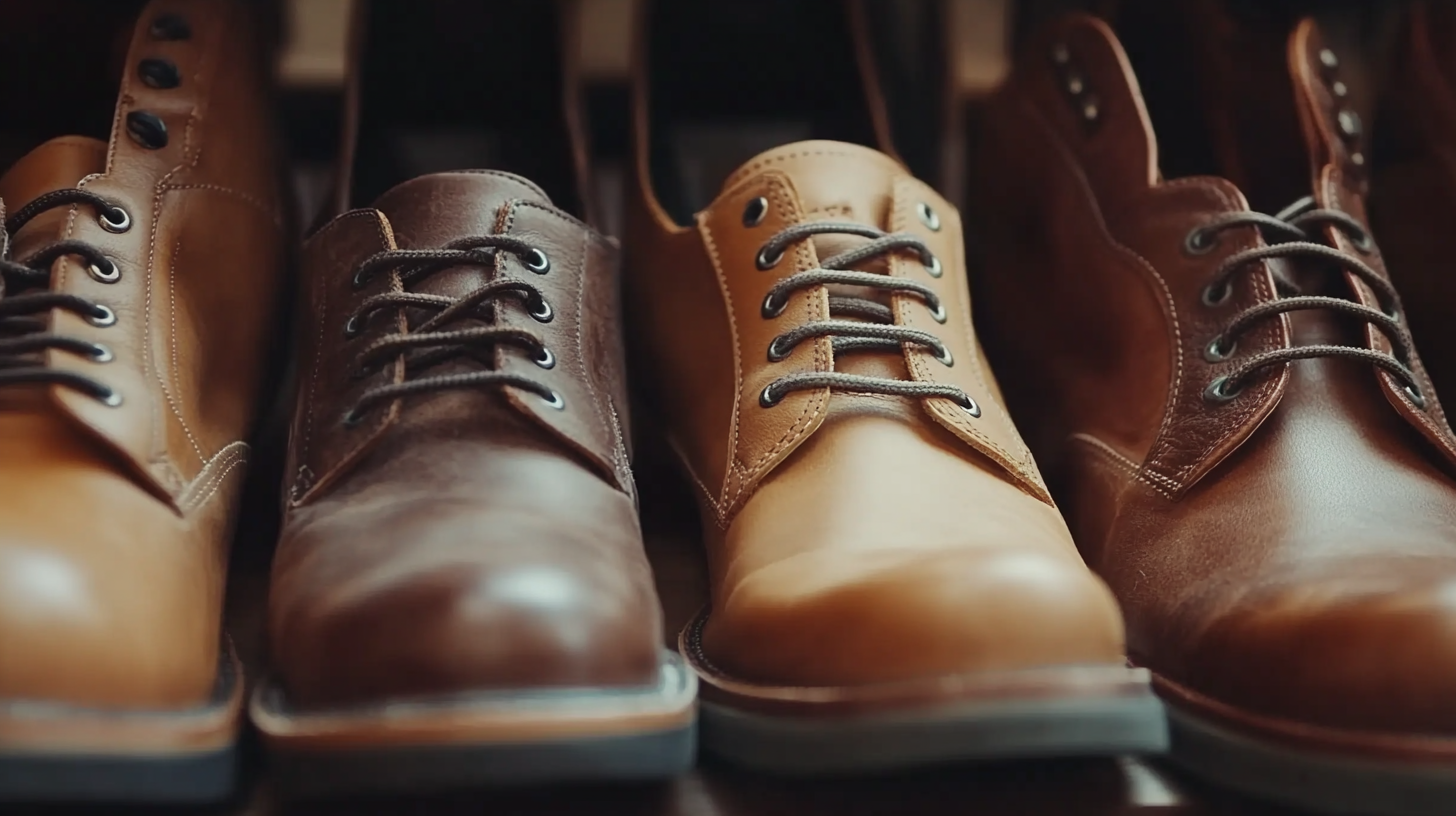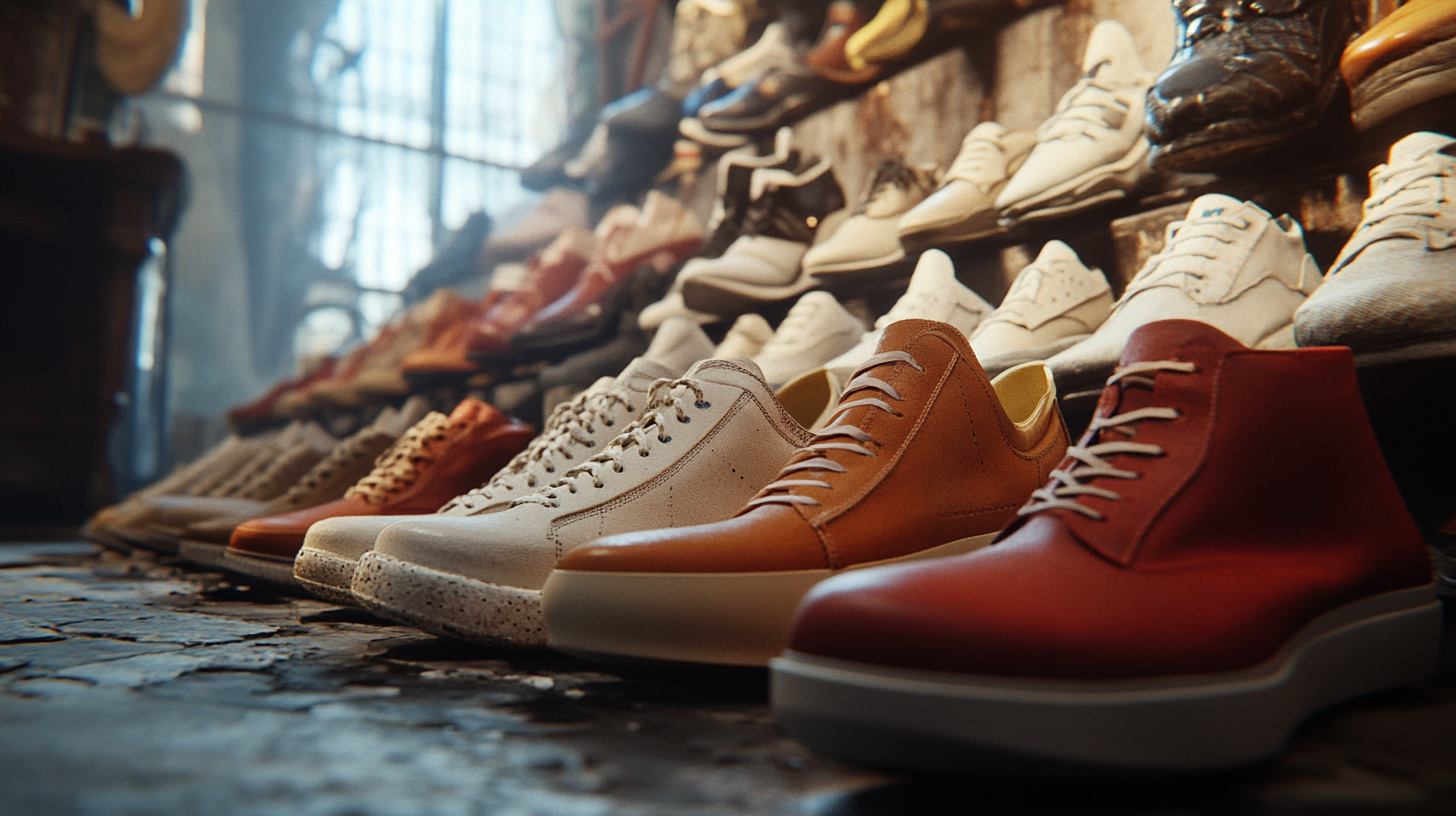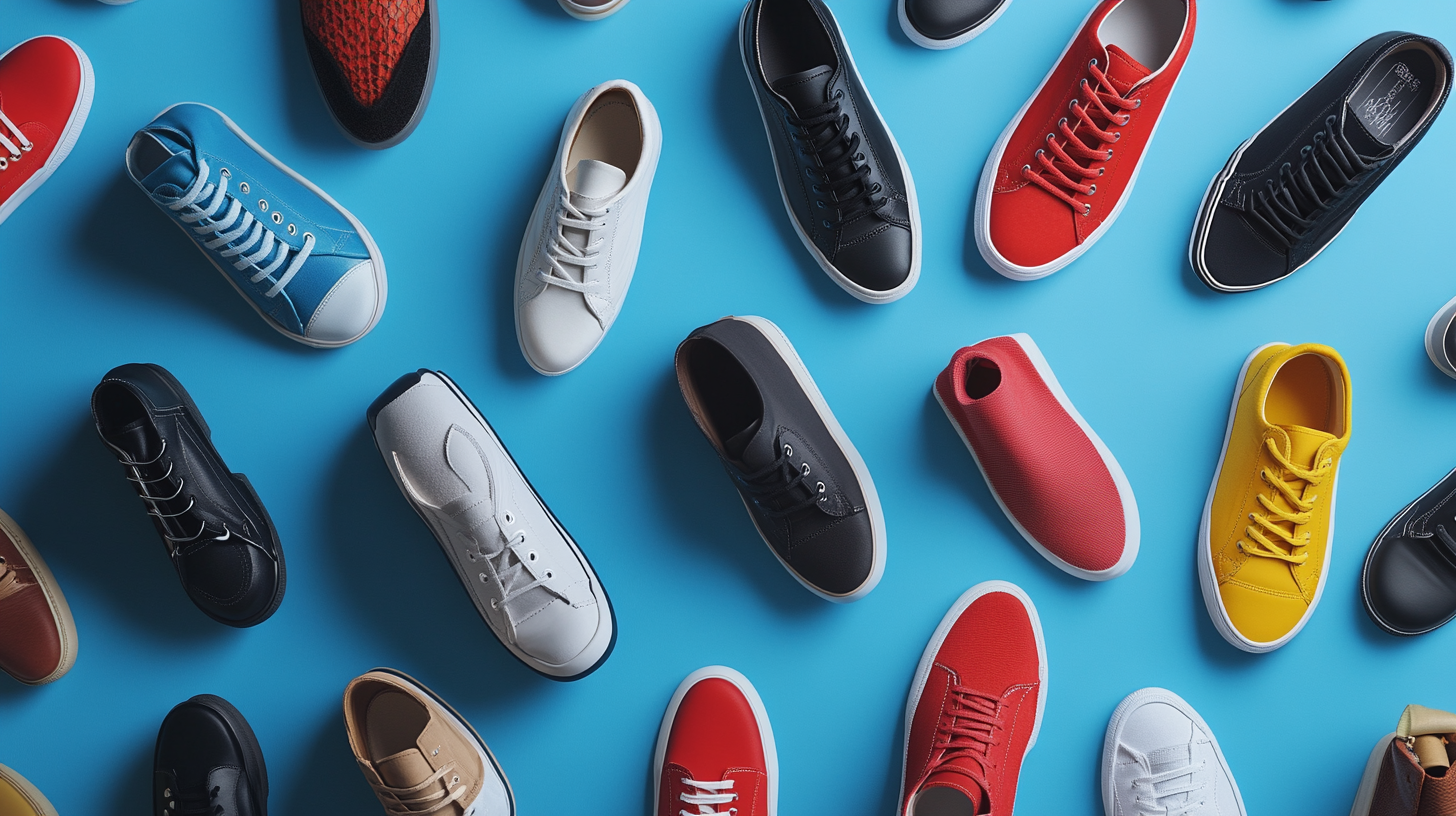
In recent years, the landscape of footwear has undergone a remarkable transformation, with everyday shoes evolving into essential components of personal style and comfort. As our lifestyles become increasingly dynamic, the demand for versatile and functional footwear is on the rise. This shift is not just about aesthetics; it reflects deeper societal changes, such as the blending of work and leisure, and a growing awareness of health and wellness. Everyday shoes have transitioned from mere necessities to fashion statements, highlighting individuality and personal expression.
As we navigate through this evolution, it’s vital to explore the trends that are shaping tomorrow’s choices in everyday footwear. From sustainable materials to technological advancements that enhance comfort, every aspect of shoe design is being reimagined. This blog will delve into current innovations and emerging styles in everyday shoes, providing insights into what the future holds for this ubiquitous element of our daily lives. Join us as we uncover how these trends are not only redefining footwear but also influencing our routines and lifestyles in profound ways.

The footwear industry has experienced significant changes in recent years, particularly in the materials used for production. A growing awareness of environmental issues has prompted a shift towards sustainable practices. According to a report from Grand View Research, the global sustainable footwear market is expected to reach $8.5 billion by 2025, growing at a CAGR of 5.4% from 2019 to 2025. This surge is driven by consumer demand for eco-friendly products and the willingness to support brands that prioritize sustainability. Manufacturers are increasingly adopting innovative materials such as recycled plastics, organic cotton, and biodegradable substances. For instance, Adidas has committed to using only recycled polyester in all of its products by 2024, showcasing a prominent example of the industry's shift. Similarly, Nike has introduced its "Move to Zero" initiative, aiming for zero carbon and zero waste, further emphasizing the importance of sustainable materials in footwear production. Additionally, the impact of these materials extends beyond the environmental benefits. Studies indicate that consumers, especially millennials and Gen Z, are willing to pay a premium for sustainable products. According to McKinsey, 66% of global consumers are willing to spend more on sustainable brands, driving companies to rethink their supply chains and material sourcing strategies. As the footwear industry continues to evolve, the commitment to sustainable materials will not only shape production practices but also drive consumer choices in the future.

As we stride into the future, the landscape of everyday footwear is being dramatically reshaped by technology and smart features. Gone are the days when shoes were merely functional; today, they serve as a canvas for innovation. From fitness tracking capabilities to customizable comfort settings, smart shoes are enhancing our daily experiences in ways we never imagined.
One of the most exciting advancements is the incorporation of health-monitoring technology into footwear. Many brands are now integrating sensors that provide real-time data on posture, balance, and even walking patterns. This not only aids in injury prevention but also empowers users to make informed choices about their health and activity levels. Moreover, advancements in materials have led to lighter, more breathable options that adapt to the wearer's foot, optimizing comfort throughout the day.
Additionally, the rise of connected footwear means that shoes can now sync with mobile apps, offering features like GPS tracking and reminders to stay active. This integration bridges the gap between fashion and functionality, appealing to a savvy, health-conscious consumer base. As everyday footwear continues to evolve, the synergy between technology and design will likely lead to even greater innovations, making our daily choices not just about style, but also about enhancing our overall well-being.

The trend towards customization and personalization in footwear has drastically reshaped consumer preferences in the modern retail landscape. As consumers increasingly seek unique products that reflect their individuality, brands are adopting innovative strategies to meet these expectations. According to recent market analyses, the global demand for customized footwear is expected to grow significantly, driven by advancements in technology and changing consumer behaviors. The footwear customization market, encompassing options like personalized fitting and design, is projected to expand as brands leverage 3D printing and artificial intelligence to create tailored products.
The rise of digital platforms has further facilitated this shift. Customers can now select designs, colors, and materials that resonate with their personal style, much like how they customize cosmetics or food. Reports indicate that the online search for "customization" has surged, encompassing a wide range of products including shoes. Market insights reveal that this increased demand for tailored experiences is not just a fleeting trend but a lasting change in how consumer brands operate. Retailers are taking advantage of data-driven insights to deliver personalized marketing and shopping experiences, thereby enhancing customer satisfaction and loyalty.
In particular, brands are increasingly integrating cutting-edge technology, such as blockchain, to authenticate the uniqueness of customized products, ensuring both quality and style remain supreme. As we progress towards 2032, the global shoe market is anticipated to witness substantial growth, particularly in segments catering to personalized footwear. This evolution underlines a significant paradigm shift in the industry, where consumer preference for customization could redefine the future of how shoes are designed and sold.

The footwear industry is undergoing a transformative shift, heavily influenced by innovations in health and wellness. Modern consumers are increasingly prioritizing comfort and functionality, leading to the rise of shoes designed to support physical well-being. This trend is evident in the growing popularity of brands that emphasize arch support, cushioning, and ergonomic designs. For example, companies are now incorporating advanced materials and technologies that provide better shock absorption and promote healthier walking patterns, bridging the gap between style and health.
Additionally, there is a heightened awareness of the long-term effects of improper footwear on physical health. As more individuals become conscious of their posture and the implications of sedentary lifestyles, they are looking for options that not only enhance their style but also offer substantial health benefits. Smart footwear equipped with fitness tracking features is also emerging, allowing wearers to monitor their activity levels and promoting a more active lifestyle. This integration of technology in everyday footwear serves to motivate users while ensuring their choice of footwear supports their overall wellness goals.
Furthermore, eco-friendly practices are becoming integral to the evolution of everyday footwear. Consumers are more inclined to choose brands that emphasize sustainability and use biodegradable or recycled materials. This conscientious approach aligns with health and wellness principles, extending the impact of footwear beyond personal health to encompass environmental well-being. As we move forward, the intersection of health, technology, and sustainability will continue to shape the future of footwear, making it a crucial aspect of daily life for health-conscious consumers.
The global market trends for everyday footwear are witnessing significant growth, reflecting changing consumer preferences and lifestyle choices. According to market projections, the global walking care products market is valued at approximately $3.84 billion in 2024 and is expected to grow to $4.05 billion by 2025, eventually reaching $6.25 billion by 2032. This trend underscores the increasing importance consumers place on comfort and foot health, which is driving demand for specialized footwear.
Furthermore, the sneaker market alone is flourishing, with its value projected to rise from $57.6 billion in 2023 to $88.88 billion by 2032, at a compound annual growth rate (CAGR) of 5.38%. The surge in athletic footwear reflects a growing fitness culture as more individuals incorporate physical activity into their daily lives. This growing trend is mirrored in other segments, such as the shoe care market, which is set to expand from $4.92 billion in 2024 to $6.43 billion by 2033, maintaining a steady CAGR of 3%.
In addition, the synthetic leather market is also on an upward trajectory, anticipated to grow from $37.59 billion in 2025 to $57.94 billion by 2032, boasting a CAGR of 6.38%. This growth is driven by the rising demand for sustainable and ethically produced materials in footwear manufacturing. The evolution of everyday footwear is clearly shaped by these market trends, signaling an exciting future for both producers and consumers in the footwear sector.
